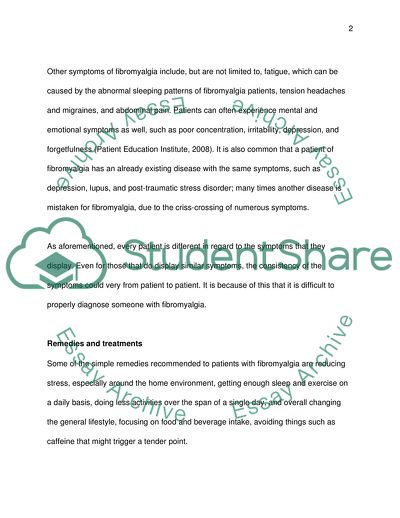Extrahepatic Manifestations: Fibromyalgia Research Paper - 1. https://studentshare.org/medical-science/1736291-common-symptoms-of-fibromyalgia
Extrahepatic Manifestations: Fibromyalgia Research Paper - 1. https://studentshare.org/medical-science/1736291-common-symptoms-of-fibromyalgia.


